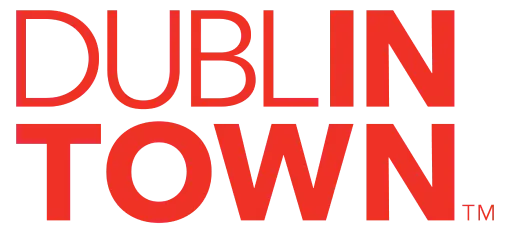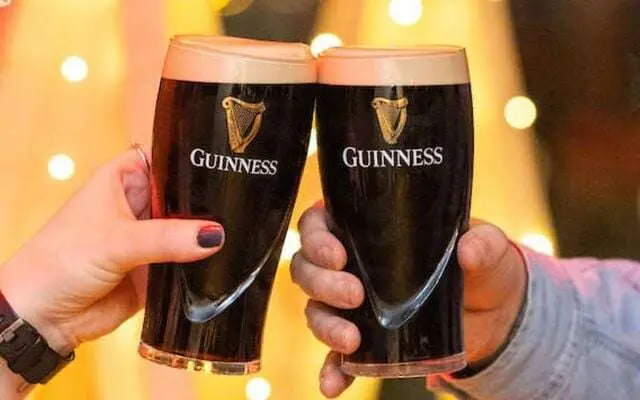Introduction to Dublin’s Charm
Dublin, the capital of Ireland, boasts a rich history dating back over a thousand years. Founded by the Vikings, the city has grown into a bustling metropolis that seamlessly blends its ancient heritage with modern vibrancy.
The city’s atmosphere is lively and welcoming, characterised by friendly locals and a thriving food and drink scene. Dublin’s compact size makes it perfect for a weekend getaway, allowing visitors to explore historic sites, enjoy cultural activities, and savour the local cuisine, all within a short time. Whether wandering the cobbled streets, relaxing in the lush parks, or experiencing the dynamic nightlife, Dublin offers a memorable and enriching escape.
Day 1 Itinerary: Must-Visit Landmarks
The Spire of Dublin
The Spire (aka Tur Solais, or Monument of Light) was the winning entry in an international architectural competition launched by Dublin City Council in 1998 to provide a replacement for Nelson’s Pillar, which was blown up in 1966.
Located in one of the busiest streets of Dublin City Centre, the Spire is the most visited spot in the city.

St Stephen’s Green
St Stephen’s Green Park is a historical park and garden, located in the centre of Dublin city. Cared for by the Office of Public Works, the park is an important public resource in the area, and provides an oasis of green calm in the middle of a bustling city. Its four centuries of history are eventful and complex, involving such important figures as Arthur Guinness, 1st Baron Ardilaun, and Countess Constance Markievicz.

Dublin Castle is a major Irish government complex, conference centre and tourist attraction. It is located off Dame Street in central Dublin. It is a former motte-and-bailey castle and was chosen for its position at the highest point of central Dublin.

Founded in 1320, Trinity is Ireland’s oldest university with a reputation as a research-intensive centre. The college’s library was an inspiration to J.K Rowling when writing the famous Harry Potter saga.

The National Museum of Ireland – Decorative Arts & History is located at one of Dublin’s most impressive, historic sites. A former military barracks is home to 2 fascinating and completely diverse collections. Decorative arts encompasses silver, ceramics, glassware, furniture, clothing, jewellery & coins while the military history collection tells of Ireland’s military and revolutionary past.

Day 2 Itinerary: Exploring Hidden Gems
The Little Museum tells the remarkable story of Dublin in the 20th Century. The museum was launched in 2011 with a public appeal for historic objects. The response to that appeal illustrates the generosity of the Irish people: today there are over 5,000 artefacts in the collection.

Mulligans pub of Poolbeg Street, Dublin is two minutes walk from the main thoroughfare, O’Connell Street and has been at the core of the city’s cultural and imbibing life for nearly 300 years. Originally a shebeen (unlicensed drinking venue) it has been ‘legal’ since 1782, making it one of the oldest premises in Ireland’s metropolis.

The Secret Book and Record Store
Hidden away on Wicklow Street, this store is a paradise for lovers of literature and vinyl records. It’s easy to miss, as it’s located through a narrow passageway, but once inside, you’ll find a treasure trove of second-hand books and records.

Local Cuisine and Where to Eat
Signature Dish: Irish Stew
As Ireland’s oldest pub, The Brazen Head provides a historic setting along with its classic Irish stew, featuring tender lamb, potatoes and vegetables simmered in a flavorful broth.

Signature Dish: Seafood Chowder
Located in the heart of Dublin, O’Neill’s offers a warm, traditional pub atmosphere. Their seafood chowder is a hearty mix of fresh seafood, potatoes and creamy broth, served with brown bread.

Signature Dish: Moroccan Lamb Meatballs
This modern café offers a fusion of Middle Eastern and Irish cuisine. The Moroccan lamb meatballs, served with yoghurt, harissa, and flatbread, are a standout dish.

Signature Dish: Fish & Chips
Overlooking the River Liffey offers a mix of traditional and contemporary Irish fare. Their fish and chips, made with fresh Atlantic cod and served with tartar sauce and mushy peas, is a must-try.

Cultural Experiences and Nightlife
Whether you’re looking to immerse yourself in traditional Irish culture, enjoy live music, or dance the night away, Dublin City Centre has something for everyone.
Famous for its connection to the Dubliners, this pub on Merrion Row offers nightly traditional music sessions in an intimate setting.

Known as Ireland’s National Theatre, the Abbey Theatre offers a range of performances from classic plays to contemporary productions. Check their schedule for current shows and consider booking tickets in advance for popular performances.

This venue on Liffey Street has multiple stages and a rooftop beer garden. It’s known for its eclectic mix of live performances and club nights.

The NIGHT TOUR ticket offers a panoramic overview of Dublin with a unique route, historical night time stories of city’s top sights and prominent figures including Temple Bar, Docklands and the oldest pub in Dublin, The Brazen Head with the stories following James Joyce, Oscar Wild or Bono.

Shopping in Dublin: From Souvenirs to Artisan Goods
Dublin City Centre is a shopper’s paradise, offering a diverse range of shopping districts where you can find everything from high-end fashion to unique handmade crafts and traditional Irish souvenirs. Here’s a guide to the best shopping areas in Dublin’s city centre and what you can expect to find in each:

Grafton Street:
One of Dublin’s most famous shopping streets, known for its high-end stores, street performers, and bustling atmosphere.
Key Stores: Brown Thomas (luxury department store), Weir & Sons (jewellery and watches), and Marks & Spencer (fashion and food)
Specialty Shops: Bewley’s Café (historic café) and Kilkenny Shop (Irish crafts and gifts).
A beautiful Georgian townhouse turned shopping centre, located just off Grafton Street.
Key Stores: Atrium (Irish and international designer fashion), Article (homeware and gifts), and AllSaints (fashion)
Specialty Shops: The Pepper Pot (quirky café), and various independent boutiques offering unique and artisan products.
Henry Street:
A bustling pedestrian shopping street, known for its variety of high-street brands and department stores.
Key Stores: Arnotts (historic department store), Penneys (affordable fashion) and Zara (fashion)
Specialty Shops: Ilac Shopping Centre (home to stores like TK Maxx and Argos) and a range of beauty and tech shops.
Tips and Tricks for Navigating Dublin
Dublin bus: The bus network is extensive. Use the Transport for Ireland (TFI) website or app to plan your route. Remember, you can pay by contactless payment, Leap Card, or exact change.
Luas (Tram): There are two main lines, the Red line and Green line, which cover many key areas in the city centre. Tickets can be purchased at the Luas stops.
Bikes and Scooters: Dublin Bikes is a public bike-sharing scheme with stations throughout the city. E-scooters and bike rentals are also widely available.
Dublin’s weather is notoriously unpredictable. Always carry an umbrella or a rain jacket, regardless of the forecast.
Use maps and navigation apps like Google Maps or Citymapper to find your way around. They can also provide real-time public transport information.
Conclusion: Planning Your Next Visit
As you conclude your visit to Dublin, remember that this vibrant city is just the beginning of what Ireland has to offer. With its rich history, dynamic culture, and welcoming atmosphere, Dublin is a place you’ll want to revisit—perhaps during one of its many renowned festivals. Consider returning for the lively St. Patrick’s Festival in March, the literary Bloomsday Festival in June, or the musical extravaganza that is TradFest in January.
Your adventure in Dublin doesn’t have to end here— let this trip be the start of many more explorations. Whether it’s another visit to Dublin or a new journey through the emerald isle, Ireland’s magic awaits you.



